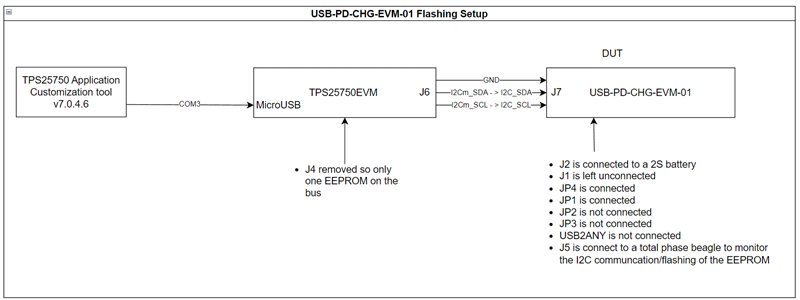Other Parts Discussed in Thread: BQ25792, TPS25750, BQ28Z610, EV2400, BQSTUDIO, TPS25750EVM, BQ25798
I am flashing the EEPROM on the USB-PD-CHG-EVM-01 with the following configuration provided from the TPS257570 Application Customization Tool v7.0.4.6:
{"questionnaire":{"version":"7.0.4.6","answers":[0,2,2,0,0,null,1,null,1,null,0,8.2,2,0.4,0.4],"options":{},"configID":"0000","vendorID":"0000"}}
In this configuration, I would expect the development board to Source power to a phone, and Sink power from a PD power supply from the attached 2S battery.
However, when I plug this configuration into a power supply, the battery does not charge. Here are the PD negotiation and BQ25792 I2C logs.PD Negotiation from wall power supply.csvBQ25792 I2C Communication from TPS25792 with wall power supply.csv
and, when I plug this configuration into a phone the phone does not charge. Here are the PD negotiation and BQ25792 I2C logs. This behavior repeats every second or so. In the log, I disconnect the phone after a few repeats.
PD Negotiation with phone.csvBQ25792 I2C Communication from TPS25792 with phone.csv




